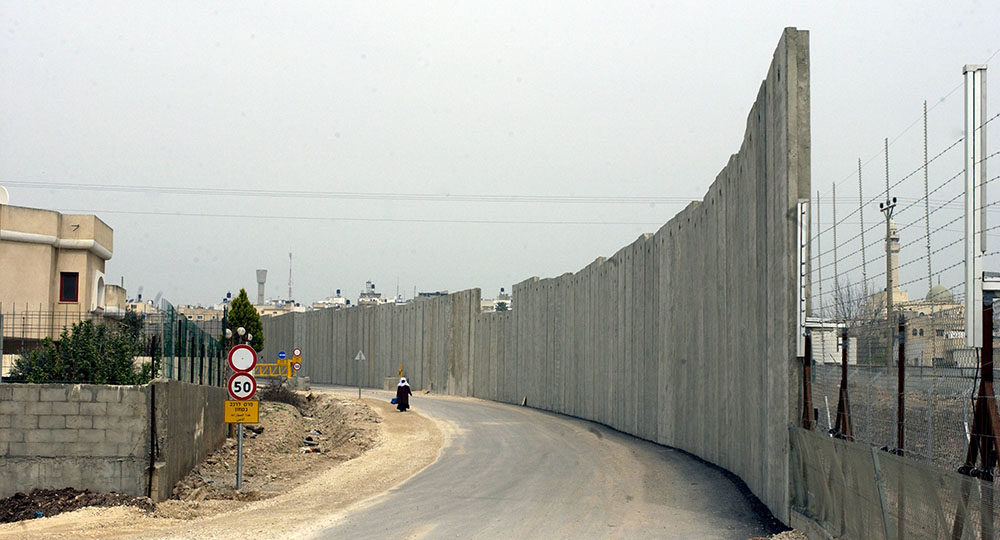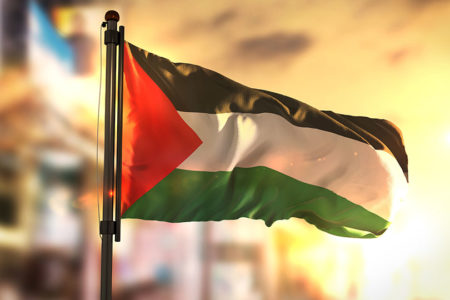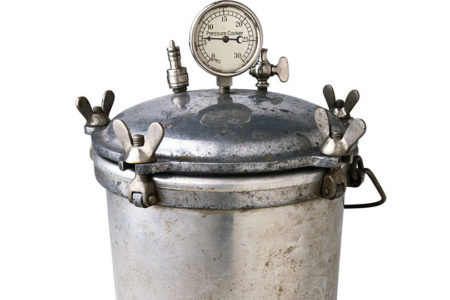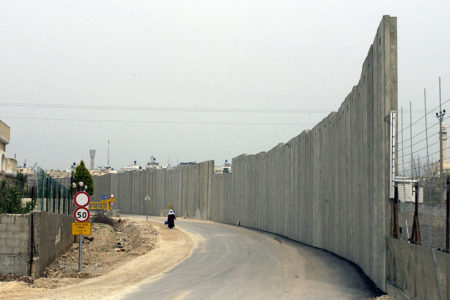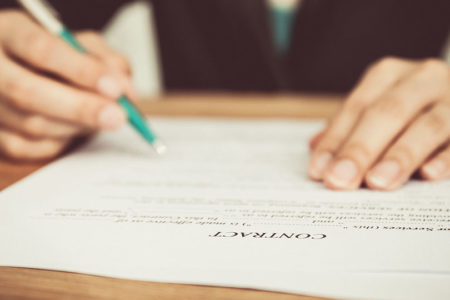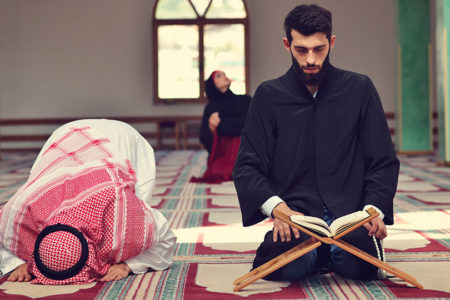The New Wall of Jerusalem
Despite fierce opposition, Israel continues to construct a nation-wide security barrier, and nowhere is the complexity of the task more apparent than in Jerusalem.
Walls have been part of Jerusalem from time immemorial. By the end of the 19th century, with housing in the Jewish Quarter of the Old (walled) City scarce, new arrivals were forced to settle in recently established Jewish neighborhoods north and west of the city walls, beyond the Jaffa and Damascus Gates. In the late 1880s, Jerusalem had about 46,500 residents: 29,000 Jews, 8,500 Muslims, and 9,000 Gentiles of various Christian denominations. Over the years the demographics have shifted, but the lay of the land has not.
Topography
One of the first things you’ll notice on the ascent to Jerusalem from Tel Aviv is that Israel’s capital city sprawls hills and valleys. As a born-and-bred New Yorker, I still can’t get over the fact that Jerusalem has no grid system and that one always seem to be walking up or down, but seldom on level ground.
My in-laws, frequent visitors to Jerusalem since the 1950s, are struck by the city’s phenomenal growth, but more so by the disappearance of the ugly wall that once separated the Jewish side of town on the west from the Arab side on the east. Lisa’s folks used to stay at the King David Hotel overlooking the Old City. But that was all they could do—look—because between Israel’s War of Independence in 1948 and the Six-Day War in 1967, most of the hills and valleys lying to the north, east, and south of Jewish west Jerusalem, including the Old City, were under Jordanian occupation and off-limits to Jews.
Now, unhappily, Israel has been compelled to construct a colossal nationwide security barrier—in some places a wall, elsewhere a chain-linked fence monitored by sensors and abutted by patrol roads. The goal of the government of Prime Minister Ariel Sharon is to enclose as much of the Jewish population as possible (including many who live in Judea and Samaria), while keeping out as many West Bank Palestinian Arabs as possible.
The Palestinian leadership, which wants to create a Palestinian state in the West Bank and Gaza Strip, says it can live with the barrier only if Israel builds it exactly where the old 1949 armistice lines were. But, argues Israel, those lines are hard to defend militarily. We cannot be cut off again from the Old City and Temple Mount, and we don’t want “consensus settlements” in Judea and Samaria—places like Ariel, Ma’aleh Adumim, and Efrat—relegated to the wrong side of the barrier. Most of all, though, we don’t want Jerusalem divided, at least not along the old demarcation lines. One needs only the briefest look at the Jerusalem of 2005 to understand why.
After the city’s reunification in 1967, scores of Jewish neighborhoods, such as Ramat Eshkol in the north and East Talpiot and Gilo in the south, were developed on the once-barren hills to the east, north, and south of the city in areas the news media often calls “Arab east Jerusalem.” It’s a misleading catchall, since “Arab east Jerusalem” frequently lies anywhere but east.
Indeed, Jerusalem’s Arab neighborhoods, such as Beit Zafafa, Beit Hanina, and Asawiya, are located respectively on the south, north, and east sides of pre-1967 Jewish west Jerusalem. After Israel reunified the city during the Six-Day War, its Arab residents were given the freedom to become Israeli citizens. Even though most opted to retain their Jordanian citizenship, Jerusalem Arabs may vote in municipal elections. Unfortunately—for them and for us—they refuse to participate because that would condone the Israeli “occupation.” They pay municipal taxes but contend that any further involvement in city affairs would undermine Arab national claims to the city they call al-Quds.
Most of the 171,000 Palestinian Jerusalemites possess blue Israeli identity cards, drive cars with yellow Israeli license plates (meaning the restrictions that apply to West Bank Palestinians do not apply to them), and are entitled to national health insurance and free education. In short, they enjoy most of the privileges of the city’s 470,000 Jewish citizens, with the exception of the right to vote in Knesset elections. The fact that they have chosen not to vote in municipal elections means, of course, they have little political or social clout within the city.
Rabin’s Fence
The inspiration of a barrier to encircle Jerusalem—part of the much larger project to separate Palestinian and Israeli populations up and down the land—took off some months into the current intifada that began in September 2000. The barrier was conceived as a way of stopping suicide bombers and explosives-laden vehicles from entering pre-1967 Israel from the West Bank.
The right wing initially opposed the idea because it handed the Palestinians a psychological victory (the satisfaction of Jews cowering behind a ghetto wall) and might place Jewish settlements that were not part of the major towns adjoining pre-1967 Israel on the “wrong” side of the wall.
Israelis on the rational left opposed the idea, claiming such unilateral action could prejudice the outcome of future negotiations with the Palestinians.
The idea of hunkering down behind a protective barrier in the face of implacable Arab opposition is nothing new to Zionist history. As early as 1923, the great Zionist visionary, Ze’ev Jabotinsky, employed the term metaphorically: “A voluntary agreement between us and the Arabs of Palestine is inconceivable now or in the foreseeable future….Settlement can thus develop under the protection of a force that is not dependent on the local population, behind an iron wall which they will be powerless to break down.”
For Jabotinsky, the “iron wall” meant Jewish might. Over the years, though, it began to look like Jewish might alone was not enough. In January 1995—two years into the Oslo Accords, with Palestinian Authority (PA) Chairman Yasser Arafat ensconced in Ramallah and “only” 118 Israeli dead since his arrival from Tunisia—Prime Minister Yitzhak Rabin resurrected a modified “iron wall” idea in reaction to a terrorist attack near the central coastal city of Netanya.
Rabin called for “a separation, though not according to the borders prior to 1967. We want to reach a separation between us and them. We do not want a majority of the Jewish residents of the state of Israel, 98 percent of whom live within the borders of sovereign Israel, including a united Jerusalem, to be subject to terrorism.”
Writing in the AIJAC (Australia/Israel and Jewish Affairs Council) Review in August 2004, former Jerusalem Post editor David Makovsky argued, “In many ways, Rabin was the intellectual father” of the security fence idea.
After Rabin’s assassination in November 1995, the proposal was put on a back burner. Prime Minister Ehud Barak, wrote Makovsky, revived the scheme shortly before the failed Camp David talks in July 2000. Like Rabin, Barak wanted the separation to be achieved by mutual agreement with the Palestinians as part of a process that created a Palestinian state in the West Bank and Gaza living alongside Israel in peace.
Arafat rejected Barak’s extraordinarily munificent concessions at that fateful Camp David summit brokered by U.S. President Bill Clinton. Just a few weeks later, in September 2000, Arafat used the pretext of Ariel Sharon’s visit to the Temple Mount to launch the current war (“second intifada”).
The Camp David debacle, plus Barak’s ineptitude in dealing with the escalating Palestinian violence both inside Israel and in the territories, contributed to his landslide defeat by Sharon in 2001.
But, as Makovsky recounted, Barak did have these parting words of wisdom to offer Sharon about the security fence: “When there are 70 dead Israelis, you can resist the fence, but when there are 700 dead Israelis, you will not be able to resist it.”
Barak was right. Since September 29, 2000, enemy forces have wounded more than 5,000 Israelis in various attacks against commuters, restaurant patrons, and other “soft” targets. As I write these words—during a relative lull in the killing—the number of Israeli fatalities stands at a staggering 1,073.
As Israeli casualties mounted, the idea of building a barrier to keep out terrorists gained momentum. The Gaza Strip, geographically manageable from a security viewpoint, was completely reencircled with an effective anti-infiltration barrier.
Blame Arafat
When we first heard about it, Lisa and I were dubious that a barrier could be built in and around Jerusalem. Lisa works at the Hebrew University’s historic Mount Scopus campus, northeast of the Old City. The enclave opened in 1925 but was inaccessible from 1948 until 1967. Her route to work takes her across the old armistice line.
Thankfully, there is nothing left of the 1967 demarcation lines nor the wall Lisa’s parents remember; Jewish residents reside in and traverse the former “east” Jerusalem, and Arab residents have become integrally linked to “west” Jerusalem. Post-1967 Jerusalem did not lend itself to being redivided.
What could be done, however, was to separate metropolitan Jerusalem from the West Bank. And that essentially has become the route of the security fence. Part of it is now in place, with various stretches under dispute, and completion is expected in 2006 at the earliest.
You would think that Arabs on both sides of the security fence would flock to “their” side to finally be rid of the yoke of “Zionist occupation.” But if anything, they are moving toward “our” side.
To be fair, Jerusalem’s Arabs oppose the fence partly because they don’t want to be cut off from the West Bank. They have a web of personal, economic, cultural, and social ties to the West Bank; and many Arabs in the West Bank depend on Jerusalem for schools and medical care. The fence will make it difficult for some Arab farmers to get to their olive groves and for some children to reach their schools; it will be a hassle to visit family only minutes away in, say, Ramallah.
To complicate matters further, some villages that spread out over distinct hills will be cut in two by the barrier. And some residents with Israeli ID cards will be stuck on the “wrong” side.
One would have to be hardhearted to dismiss the human suffering—even the annoying inconvenience—the barrier will cause Jerusalem’s Arabs. But one cannot let those concerns override the benefits. Remember: there would be no barrier were it not for years of ferocious, relentless, Islamist-inspired Palestinian terrorism.
From Gilo to Kalandiya
For the Arabs, every Jewish neighborhood built on the hills liberated in the 1967 war is part of “occupied East Jerusalem,” or the media misnomer, “Arab east Jerusalem.” This is true of Gilo, East Talpiot, French Hill, Pisgat Ze’ev, Har Homa—you name it.
Take Gilo, for example. At the start of the second intifada, gunmen from Bethlehem and Beit Jalla unleashed a bombardment on Gilo. The Israel Defense Forces (IDF) responded by bringing tanks into Gilo to lob shells in the direction of the incoming fire. You can still see the gaping holes caused by the IDF’s retaliatory fire in some of the Beit Jalla buildings.
All is quiet now. The tanks are gone. But the Gilo residents’ windows that face the Arab areas below have been bulletproofed.
Gilo is the starting point of the southern section of the barrier that will, with any luck, envelop all of metropolitan Jerusalem on a route that runs along an eastern semicircle and terminates in the north near the city’s disused airport in Atarot.
Topography and security will dictate the character of the barrier: A wire fence with adjoining patrol road will handle places like Gilo, where large tracts separate Arab and Jewish neighborhoods; elsewhere, where it’s necessary to separate densely populated areas or where a wire fence can be easily circumvented, ugly concrete blocks are going up.
Mr. Sharon: Finish This Wall
The separation fence, security barrier—call it what you want—is very much a “shrine” to Yasser Arafat’s sullied life. Offered Ehud Barak’s hand in peace, “Mr. Palestine” tried to chop it off. Not only that, he inspired his millions to blow themselves up; to slaughter as many Jewish men, women, and children as they could; to revel in their victimhood; and to engage in bloodlust.
One day, please God, a physical barrier between Israelis and Palestinians will be unnecessary. But for now, it is desperately needed. And Lisa and I fervently hope Mr. Sharon can get this wall up and secure—the faster the better.
